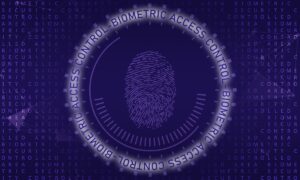Introduction to Identity Verification
In today’s fast-paced digital age, identity verification is pivotal in ensuring secure transactions, safeguarding personal data, and fostering trust in digital interactions. From online banking to e-commerce, accurately verifying an individual’s identity is paramount in protecting against cyber threats and fraud. A crucial development in this field is behavioral biometric authentication, which uses unique patterns such as keystrokes, navigation habits, and even typing speed to verify someone’s identity in real time.
The advent of such sophisticated techniques reflects a broader trend where businesses and individuals are reevaluating traditional security protocols. As cyber threats become more sophisticated, so must our methods for combating them. This article delves into the trajectory of identity verification and how these emerging trends are reshaping the landscape of digital security.
The Role of Biometric Authentication
Biometric authentication has moved beyond its initial novelty phase, becoming an essential security measure globally. This method leverages physiological (e.g., fingerprint, retina scan) and behavioral characteristics to verify identities. Its application ranges from unlocking smartphones to accessing secure facilities, providing a seamless and intuitive approach to safeguarding information.
Continued Growth and Adoption
The rise of biometric authentication systems reflects an increasing trust in the technology across various sectors. Financial institutions, healthcare providers, and governmental agencies are now adopting these systems at an accelerating pace. The convenience and enhanced security provided by biometric systems are closing the gap with traditional verification methods like passwords and PINs, heralding a future where these features are as ubiquitous as the devices they are used on.
Machine Learning and Artificial Intelligence
Integrating machine learning and artificial intelligence (AI) into identity verification systems is ushering in a new era of security. These technologies enable systems to learn from data quickly, adapt to new security threats, and provide more accurate identity verification processes.
AI-Driven Behavioral Biometrics
AI-driven systems in behavioral biometrics can analyze complex behavioral patterns, such as how users interact with their keyboard, mouse, or touchscreen. These intelligent systems can detect anomalies in behavior that might suggest fraudulent activity. The result is a dynamic and adaptive security system that meets current threats and can anticipate and neutralize future risks.
Privacy Concerns and Ethical Considerations
Despite the apparent advantages, the growth of identity verification technologies raises privacy concerns. Individuals are increasingly aware of how their data is collected and used. The challenge lies in fostering innovation while ensuring these technologies are deployed ethically and responsibly.
Addressing Challenges
To tackle these concerns, companies and regulatory bodies are working to ensure privacy by design is a core component of verification systems. This involves embedding privacy features within the design structure of new technologies, ensuring that personal data rights are maintained. Continuous dialogue and collaboration among stakeholders are vital in designing systems that balance technological advancement with ethical standards.
Regulatory Compliance and Standards
As identity verification technologies evolve, so must the regulatory frameworks governing their application. Ensuring these technologies are safe, secure, and used appropriately requires robust standards and guidelines.
Impact of Global Regulations
International standards are crucial in shaping how identity verification technologies are implemented. Consistent global standards ensure companies can deploy secure verification systems across borders without violating local laws. Establishing these standards fosters trust and security, encouraging broader adoption of cutting-edge technologies, as noted by industry leaders who advocate for uniform security measures.
Beyond Digital: The Future of Identity Verification
Identity verification is not just a digital phenomenon. Its principles and applications extend into physical domains, affecting how we interact with everyday technology.
Integration with IoT and Smart Devices
Integrating identity verification with the Internet of Things (IoT) expands its reach considerably. Smart devices, from household appliances to wearable tech, increasingly demand secure ways to authenticate users. By embedding robust identity verification protocols within these devices, the possibilities are vast for creating innovative ecosystems that enhance the quality of life while ensuring privacy and security.
Conclusion: A Dynamic Future Ahead
The landscape of identity verification is set to become even more dynamic, characterized by a delicate balance of technological advancement, regulatory compliance, and ethical integrity. As we navigate these changes, the key will be crafting solutions that prioritize security without sacrificing privacy. Stakeholders must remain informed and proactive, fostering a culture of trust that matches the pace of technological progress.








